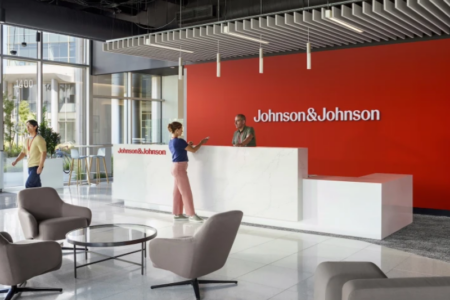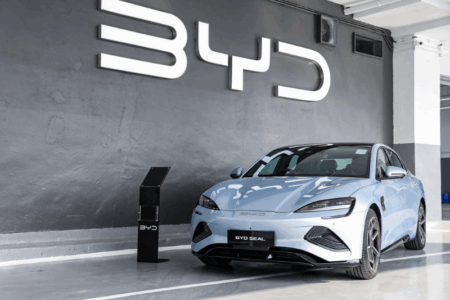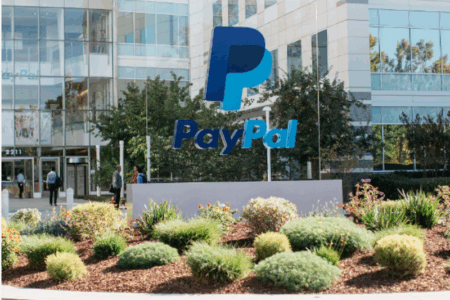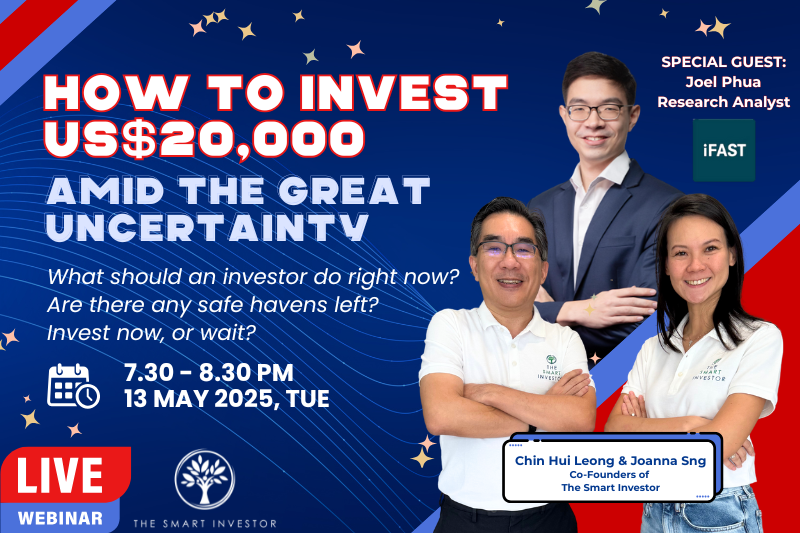Warren Buffett once said that “margin of safety” has been the bedrock of his investing success for decades.
But what do these three words mean?
Let’s use an analogy: imagine you are an engineer and you are tasked to build a bridge that can withstand cars weighing 1,000 kg every day.
How strong would you make the bridge?
Would it be able to support 1,000 kg or 1,500 kg?
If you chose the first option, you are cutting it close.
But if you chose the second option, you have grasped the concept of margin of safety.
In investing, margin of safety is about leaving room for error because you’ll never know what will happen in the future.
For example, think about the pandemic which shook the world three years ago, a rare and unpredictable event that had a huge impact on businesses and industries.
Few, if any, could have foreseen or prepared for it.
That’s why margin of safety is important; it helps protect your stock portfolio from unexpected risks.
But how can you apply this concept when you invest?
Let’s find out.
On the margin
Applying a margin of safety depends on how you assign value to a business.
Consider a restaurant sitting on top of a plot of land worth US$10 million.
For a traditional value investor, the asset, which in this case is the land, is more important than the business sitting on top of it.
By ignoring the latter, you avoid all the uncertainty a business brings.
Instead, you are focused on the value of an asset which rarely changes, your first layer of protection.
The next step is about how much you are willing to pay for the asset.
Any value investor worth their salt will bid lower than US$10 million, applying a discount to the land’s value; the larger the discount, the better.
In this sense, the magnitude of the discount is often associated with the idea of margin of safety.
The higher the percentage, the more you are protected against unforeseen risks.
This is your second layer of protection.
Sounds reasonable, doesn’t it?
But there are still flaws to this approach.
Safety is in the eye of the beholder
No investing process is perfect.
As an investor, it’s imperative that you understand how it can go wrong.
For instance, judgement is needed in applying a discount to an asset’s value.
Bid too close to US$10 million, and you may not be getting enough margin of safety. Demand too high a discount and the offer price may not come down low enough for you to buy.
In addition, in the stock market, discounts rarely appear without caveats.
Typically, the business which sits on top of the land has to be doing terribly for it to be valued below its asset value.
In this scenario, you have to be reasonably sure the management team does not make moves which undermine the value of the business’s assets or be forced into selling the business on the cheap.
Finally, the value of the asset may need to be realised for it to be recognised by the stock market.
Under these circumstances, value investors may be caught waiting for years before the stock price comes close to the value of the underlying assets they hold.
If the wait stretches out too long, the returns may not be enough to compensate for the time taken.
Safety in value creation
As a growth investor, I view the concept of margin of safety differently.
For me, the value created by a business is my margin of safety.
On the surface, my approach appears to be at odds with the concept of margin of safety.
Why place your faith on a business which is inherently filled with uncertainties?
Yet, I would argue my approach is easier to apply.
Consider the contrast between value and growth investing.
In a value investing approach, as you have seen earlier, your task is to figure whether a business which ran into trouble is not not doing as badly as it seems.
You are compensated, in this case, with a lower stock price.
In comparison, when you pick growing businesses which are already doing well, all you have to figure out is whether it can continue doing well in the future.
This business puzzle, to me, is easier to solve.
Sure, you will pay a higher price at the start as growing businesses rarely sell on a discount.
But if done well, the value which builds up over time will compensate you for the risk taken.
When value creation becomes your margin of safety
To share an example, take Chipotle Mexican Grill (NYSE: CMG), a US-based, fast-casual Mexican food chain.
In 2006, the business was generating less than US$6.3 million in free cash flow (FCF). Today, the food chain churned out US$1.25 billion in FCF over the past 12 months, some 200 times more than its 2006 level.
During this period, its share count also declined by 14 per cent.
Thus, on a per share basis, the company’s current FCF per share is over 230 times higher than 2006’s FCF per share.
From here, there’s the matter of the price paid for Chipotle’s shares.
In my book, there are two main components that make up the share price: the free cash flow per share (FCF per share) and the price to FCF (P/FCF) ratio.
Under this framework, here’s how the P/FCF ratios compare between 2006 and today.
At the end of 2006, the stock was trading at US$57 or around 295 times its 2006 free cash flow per share, a valuation that cannot be described as cheap.
Fast forward to today: at a share price of around US$1,822, the free cash flow per share multiple has declined to 40.5 times, over 86 per cent lower compared to 2006’s level.
Yet, despite the drastic fall in this multiple, eagle-eyed readers would have noticed that shares today are 32 times higher compared to the end of 2006.
The reason should be obvious, by now.
Since there are only two components in the share price, then it has to be the growth FCF per share which drove the share price higher over this period.
That’s not all.
If you compare the share price at the end of 2006 (US$57) to today’s FCF per share (US$45 per share), you would get a valuation which is less than 1.3 times.
This is an extremely low multiple for the stock, giving you plenty of room for error.
And what drove the creation of this margin of safety?
That’s right, it was the value of the business, signified by the growth of its FCF per share.
Get Smart: What’s your margin of safety?
As Albert Einstein once said: in theory, there is no difference between theory and practice.
In practice, there is.
The idea of margin of safety is sound, but the way you put it into practice will make all the difference.
There is no right or wrong answer — just YOUR answer.
The approach you take has to resonate with the way you invest.
If the value investor’s way rings true to you, then by all means, take the discount approach. But if you are oriented towards business growth, as I am, then consider value creation as your ultimate margin of safety.
Note: An earlier version of this article appeared in The Business Times.
Are we really ready to live in a world with AI that could potentially take over our jobs? Check out our latest Special Free Report on this fascinating topic. We cover the latest developments in AI and how they could impact your life and investments. Click here to download a copy now.
Follow us on Facebook and Telegram for the latest investing news and analyses!
Disclosure: Chin Hui Leong owns shares of Chipotle Mexican Grill.





